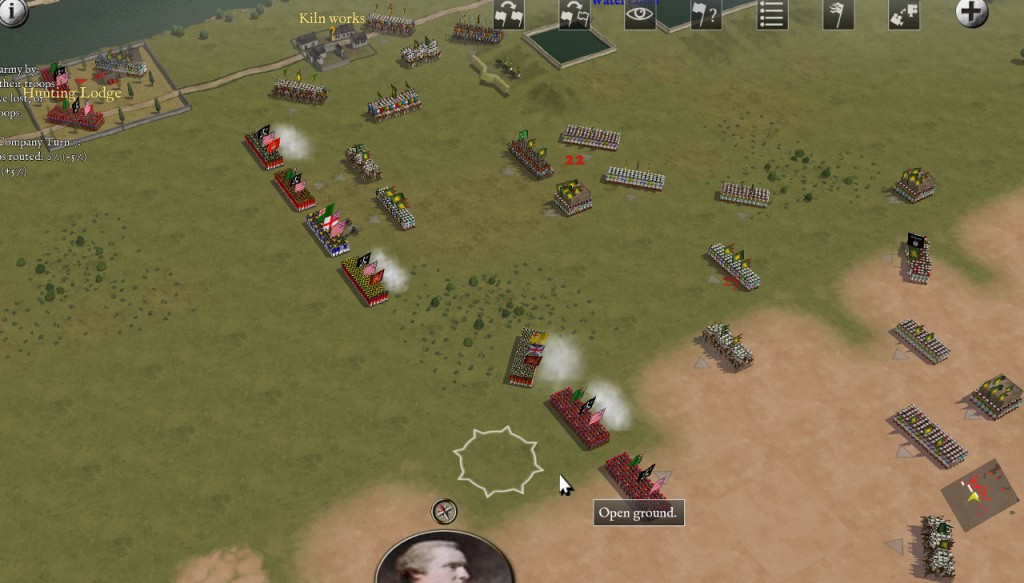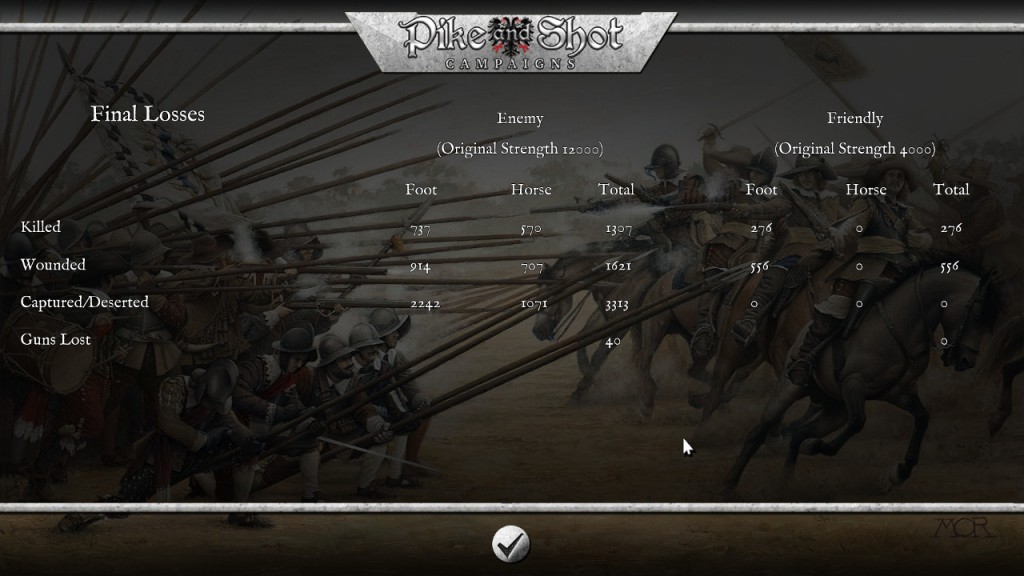Speaking of the East India Company, my tinkering with Seven Years War scenarios led me to try a user-made version of The Battle of Plassey in Pike and Shot.
The battle’s context, The Third Carnatic War (the Carnatic Region being the southern half of the eastern coast of the Indian subcontinent) was, like the French and Indian War, a minor theater of the Seven Years War in Europe. The fighting in India tended to serve as a proxy war for tensions in Europe, even in times of peace. The fight (at Plessey, particularly) was between the private forces of the British East India Company and the Mughal Bengal, a Sultinate which was part of the Mughal Empire. Behind the scenes were England, of course, and the French, opposing England by backing Bengal. The Sultinate had grown both rich and modern under the power of the Mughal Empire and through access to world trade courtesy the Dutch East India Company’s. The Battle of Plassey brought Bengal under English influence and sidelined the EIC’s Dutch rivals.

Despite the battle being well beyond the scope of Pike and Shot, it isn’t the worst fit for the engine. Moving the venue to India means that the pre-industrial technologies of the game are a better match for reality than they would be in a Western Europe -based Seven Years War scenario. Furthermore, the modern units on the field are all infantry. I suspect that Pike and Shot‘s ability to handle mid-18th Century musket-and-bayonet units is probably fairly reasonable – although I have no real basis for that speculation.

It’s a simple scenario, with few English units – meaning little room for complicated tactics. In my play-through, my approach was to hold together in a line, which served to prevent the enemy’s, through superior numbers, from gaining a positional advantage. The scenario’s designer uses low morale to simulate the lack of drill afforded the Bengal forces. The result, possibly fully intended, is that many units are hesitant to commit to battle. I can get away with exposing flanks in ways that would be suicidal in other scenarios. Not a single one of my units broke in the face of the enemy – perhaps a first in my Pike and Shot career.

As is so often the case in wargaming, the in-game result was far more bloody than the historical reality. Proportionally, the result came out right; that being an overwhelming victory for the East India Company. Both sides, however, suffered casualties in excess of 10X those actually lost in the battle. Although this might be seen as a black mark on the Pike and Shot engine, I’m convinced almost any wargame would show similar excess mortality.

Pingback: Saratoga Things | et tu, Bluto?